How Beamish is Celebrating the King's Coronation and 50th Anniversary of its Iconic Tramway
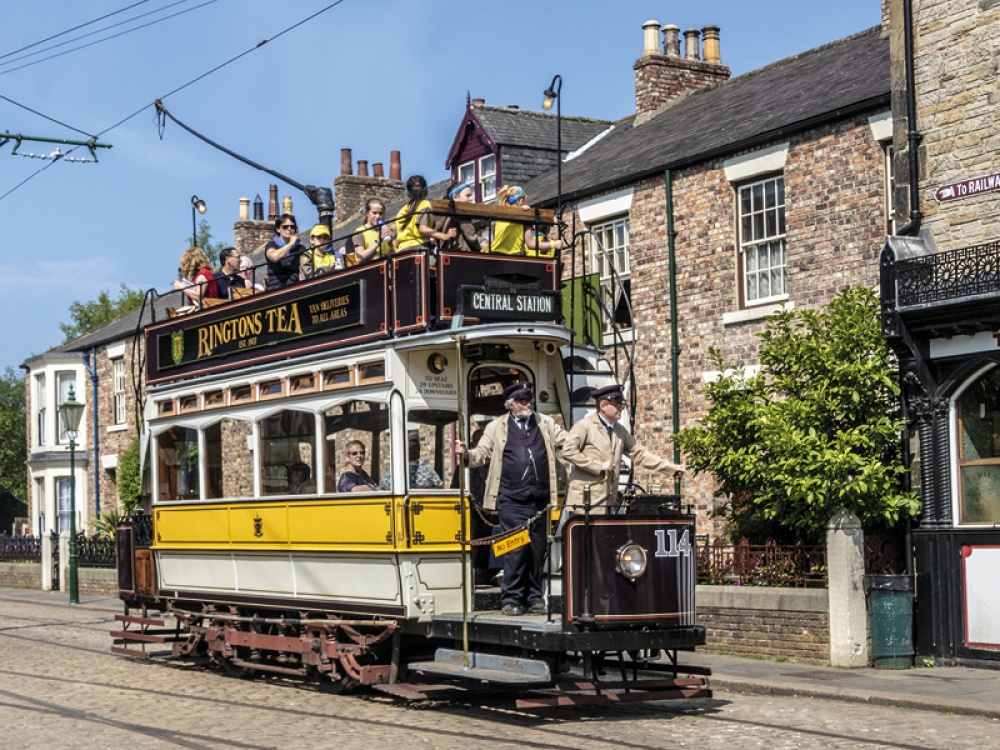
Living North go back in time (once again) at The Living Museum of the North, to take a look at Beamish's new additions, and find out how Coronation celebrations coincide with the 50th anniversary of its tramway
Remaking Beamish, a project which is bringing a new era to the museum, is the biggest development in the museum’s history. In the past Beamish has always been developed one building at a time, but thanks to funding from The National Heritage Lottery Fund and various other trusts and foundations, the team have been able to construct an entire 1950s town and extend the number of buildings within the Georgian area, and are renovating currently disused buildings to create a Drover’s Tavern, pottery and self-catering accommodation.
‘We’ve worked really hard to include buildings and stories from communities across the region. We have an upland farm from Weardale, a recreation of a cinema from Ryhope, a recreation of Norman Cornish’s house from Spennymoor and a replica of the John Whitehead Bowling Pavilion from Billingham,’ says Helen. ‘We’ve worked with families who lived in some of the buildings, and various community members, to collect stories and objects we can use to really bring the spaces to life and capture a sense of the place they represent. We’re excited to open the bowling pavilion and green, semi-detached houses and police office and houses early this summer, and following that, our aged miners’ homes, copied from Marsden Road in South Shields, which will be a base for our pioneering work with older adults and people living with dementia.’
Read More: How to Make a Show-Stopping Crown for the Coronation

By adding to the museum, Beamish wanted to create a space which was within living memory for some of its visitors – just as the 1900s Town and Pit Village would have been when the museum first opened. ‘We see so many multi-generational groups visiting the museum and the ability of older visitors who have experience of the time period, and younger members who have visited on a school trip, to engage with each other and share their knowledge is magic,’ Helen adds. ‘The story of the North East didn’t stop in the early 20th century and it’s important that we continue to collect a material record of the region and its people so that Beamish can continue to develop and continue to tell the story of the North East.’
Helen has been delighted by the response to the new areas of Beamish. ‘It has been quite overwhelming for the family and community members who have been involved in the recreation of spaces they remember to see them brought back to life,’ she says. ‘Visitors have loved the new exhibits, and the 1950s park has been a real hit with our younger visitors!’
This year’s Coronation coincides with the 50th anniversary of the Beamish Tramway, so it’s a double celebration for Beamish. The coronation itself will be broadcast in the 1900s Pit Village chapel and 1950s welfare hall. ‘Across the three days of the Coronation Bank Holiday weekend, we are planning to have a street party to celebrate the occasion,’ adds Celyn Williams, Assistant Director (Engagement). ‘With our tramway anniversary celebrations we are hoping to welcome visiting buses and a tram over the three days. It’s all shaping up to be a great extended weekend!
‘Museums are not just about the past. We also reflect on what is happening within society today too. The Coronation is of course an historic occasion for us all. Celebrating the 2023 Coronation also gives us the opportunity to look back at how people marked the coronations of past monarchs, from George IV to the present day. We have a variety of collections that relate to the royal family, specifically commemoration pieces that celebrate royal weddings and coronations going back over the last 150 years or so. We also have the uniform of a police officer who was seconded to help with crowd management at the coronation of Queen Elizabeth II which will be on display in the 1950s police houses. Over the years we’ve been privileged to welcome members of the royal family at openings of new exhibit spaces including The Queen Mother, Duke of Kent and Princess Anne.’
‘The story of the North East didn’t stop in the early 20th century and it’s important that we continue to collect a material record of the region and its people’
The tramway will be supporting the museum operation throughout the year, covering approximately 24,000 miles through the season. ‘We are investing heavily in a major overhaul of the first tram that we had, Gateshead No 10, and have recently invested over £70,000 in the tramway track,’ says Paul Jarman, Assistant Director (Design, Transport and Industry). ‘Over the long weekend we will be holding a special event called Fares Please celebrating public transport at the museum, and we’ll also be hosting a model tramway exhibition on 7th and 8th May.
‘There are a lot of dedicated tramway modellers who do not often have the chance to exhibit their work or view other tramway models at an exhibition devoted to them, so we are always very pleased to host such exhibitions,’ continues Paul. ‘We will have a variety of model tramways on display in our 1950s welfare hall, ranging from small table-top layouts to large-scale models which are built as perfect miniature replicas of real tramcars and can be driven using very similar equipment. These are so large that they are not usually operated at home, so an exhibition venue gives them a chance to be put through their paces.’
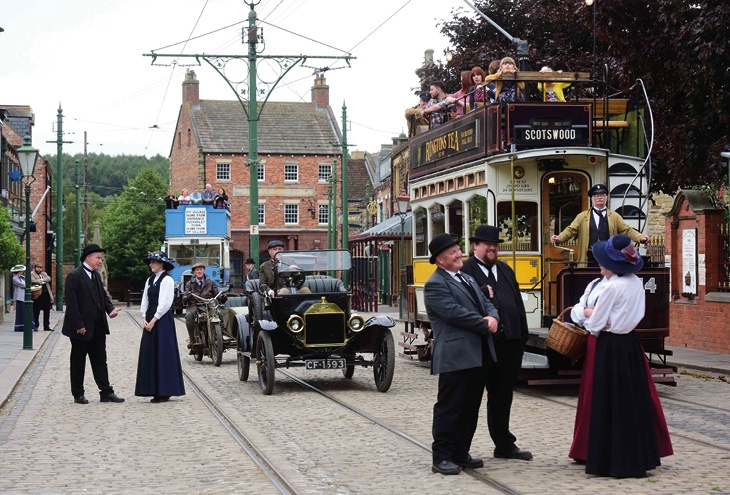

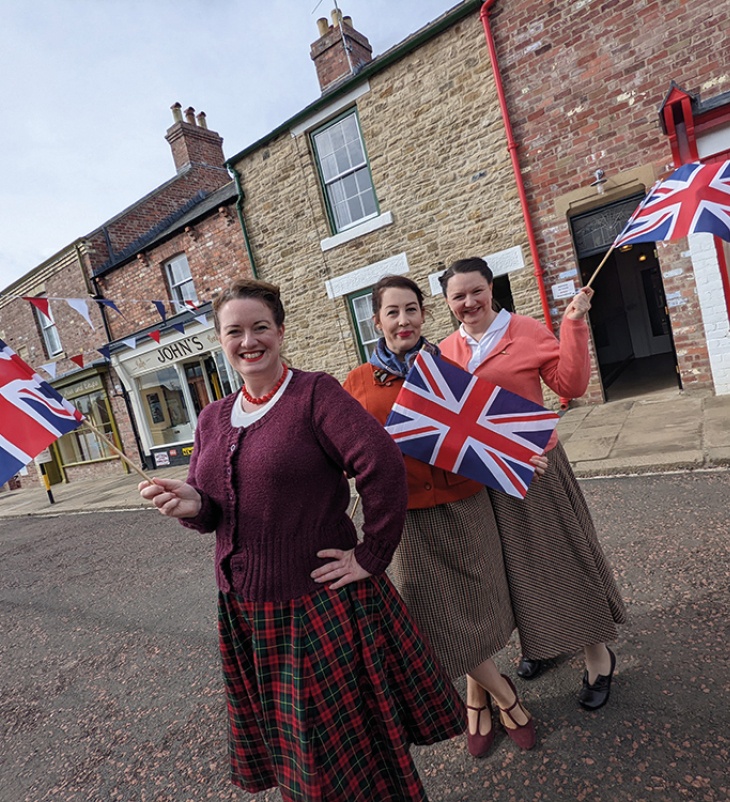

‘By adding to the museum, Beamish wanted to create a space which was within living memory for some of its visitors – just as the 1900s Town and Pit Village would have been when the museum first opened’
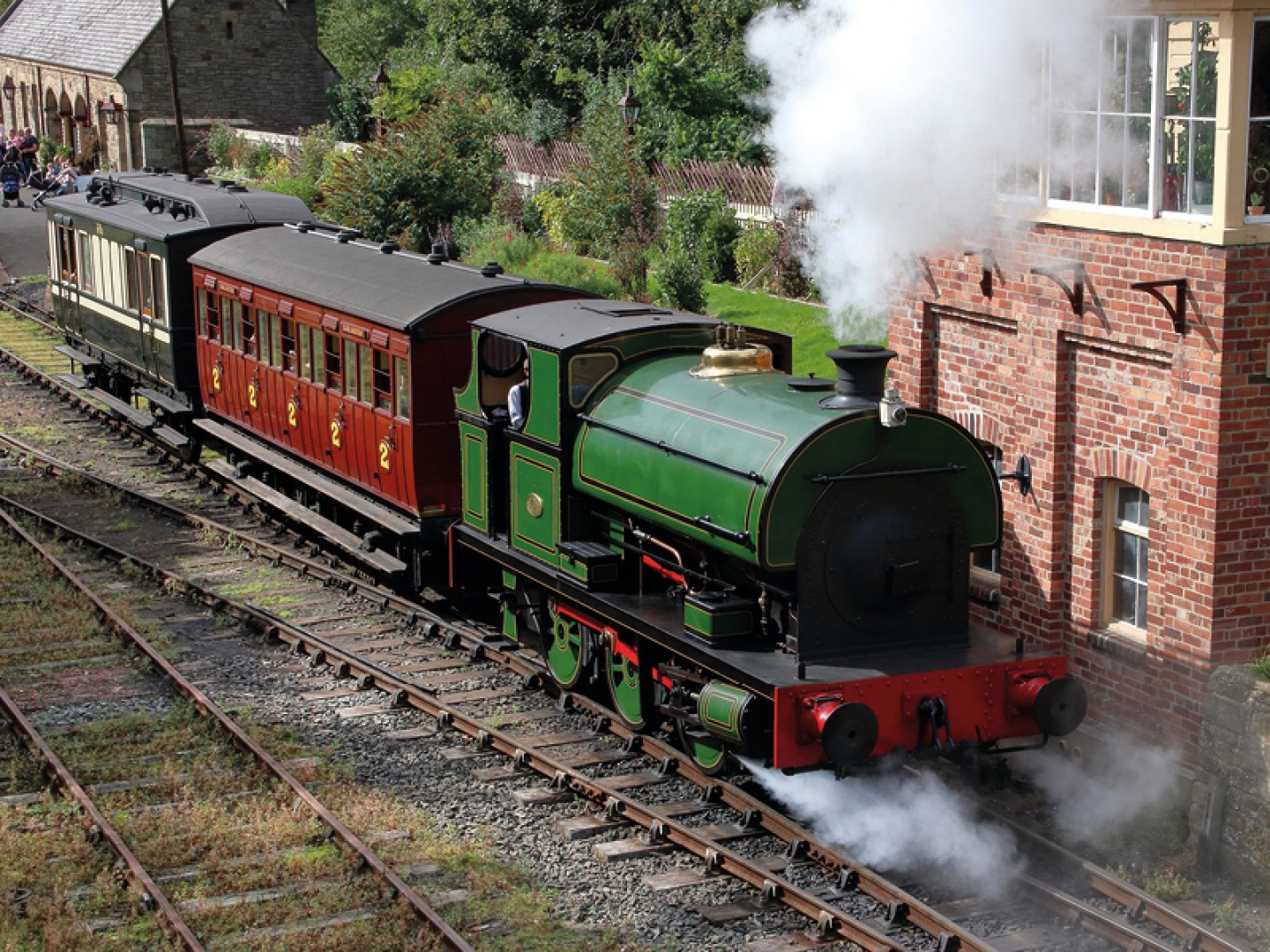
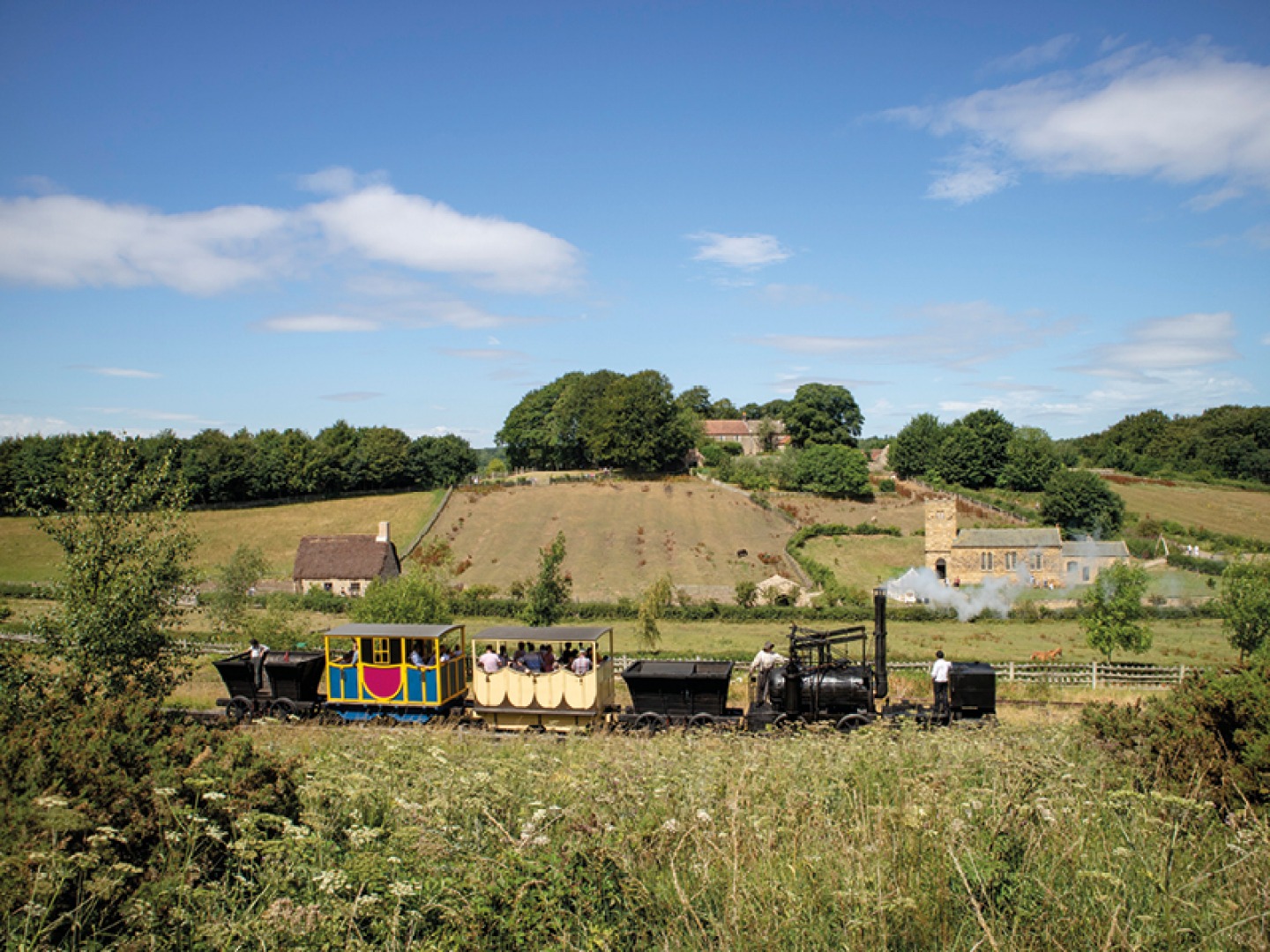
Read More: All About the North Yorkshire Moors Railway Ahead of their 50th Anniversary Celebrations
The tramway is 1.5 miles long in total and operates on a circular route, connecting the main areas of the museum. ‘Whilst trams have returned to the streets of the UK in a number of cities, they are modern in concept and design,’ explains Paul. ‘Our trams and tramway show how the early era of the electric tramway enabled towns and cities to grow and expand, how urban commuting looked and felt, and also how the technology, simple as it is, was developed into a safe and reliable system that could sit alongside everyday life quite happily.’
Beamish has a small operating fleet of six historic tramcars. ‘We have others awaiting restoration or out on loan, but the six we use as the core fleet will be familiar to visitors,’ Paul clarifies. ‘They date from 1901 through to 1936 and represent systems in Newcastle, Sunderland and Gateshead, with examples from Sheffield, Blackpool and Oporto enabling the fleet to reflect traditional tramways and also ensure we can maintain the service.
‘Some of our trams are approaching a century and a quarter in age, but they can still work hard and earn their keep. Similarly our steam locomotives offer the chance to keep older technologies operational and in the public eye – we have one working steam locomotive that is over 150 years old now, and is still every bit as capable as it was the day it was built!’
To find out more about the exhibitions and events taking place at Beamish, and to plan your day out, visit beamish.org.uk.
What is your favourite thing about working at Beamish?
Celyn: It’s a cliché but no two days are ever the same. We deliver such a variety of events and there is always something new to learn or take part in at the museum for staff, volunteers and visitors alike. My favourite aspect of working at Beamish is having the opportunity to share stories about the history of the North East (the good the bad and the ugly) with people of all ages and backgrounds.
Paul: I love looking at our historic collections and working out how we can bring them to life for our visitors in a reliable and safe way, and also ensure that they endure as working objects.
If you could go back to any time period, where would you go?
Helen: I wouldn’t! Sometimes I think it would be lovely to go back in time and live in a pit cottage with a roaring fire and cosy kitchen but I think the reality of life for most women at that time was hard work and few hard-won freedoms.
Celyn: There are interesting aspects to all bits of history. If I could get in a time machine it would be fascinating to visit the Roman period in the North East. We have such rich archaeological evidence which is interpreted and reinterpreted. It would be exciting to be a fly on the wall to see how the Roman occupation unfolded. (I’d need to be a very long-living fly to witness it all though!)
Paul: I think I would have to travel back to the turn of the 20th century when the technology we now think of as historic was brand new. I’d also like to see what working life really looked like – in colour.
What’s your favourite area of Beamish and why?
Helen: The garden at Pockerley Old Hall looking out over The Waggonway – you’re transported to a different century.
Paul: For me, it’s the Colliery area. It’s the closest recreation that we have to an industrial environment and seeing the coal trains shuffling around behind the back street of the cottages seems so ordinary and everyday. It is the recreation of this everyday atmosphere that is so extraordinary. As well as the coal trains, locomotives, cottages and chip shop, the winding engine, which is a unique Durham coalfield design, dates back to 1855 and can still be seen in steam and operating.
How can visitors best spend their day at Beamish?
Helen: I am a regular Beamish visitor with my two girls and the route we like to follow is first stop the fairground to go on a couple of rides, then to The 1900s Town via the ice cream kiosk or the sweetshop, pay a visit to the dentist and take a look in the garage. Next, we like to wander round to The 1950s Town’s Front Street terrace to get chips before heading to the recreation ground for a spot of miniature golf and the high slide. We can’t miss a trip on a bus or a tram – top deck of course – and usually head to The 1900s Pit Village for some handwriting practice in the school and to say hello to the pit ponies. If we have any energy left after that we’ll go to The Waggonway for a ride on the train.
Paul: Jump on a bus or tram and head to Pockerley first, then the Colliery, 1900s Pit Village, 1900s Town and finish off in The 1950s Town – and don’t miss the farms.
Celyn: By making full use of their Beamish Unlimited Pass or Friends of Beamish Membership. There is so much to experience here, it’s hard to fit it in over one day which is why all our tickets last a year – pay once and visit free for 12 months. I would always recommend a trip to our sweetshop, the fish and chips are amazing too and you can even get your hair done in Elizabeth’s before riding on a historic tram or bus.







